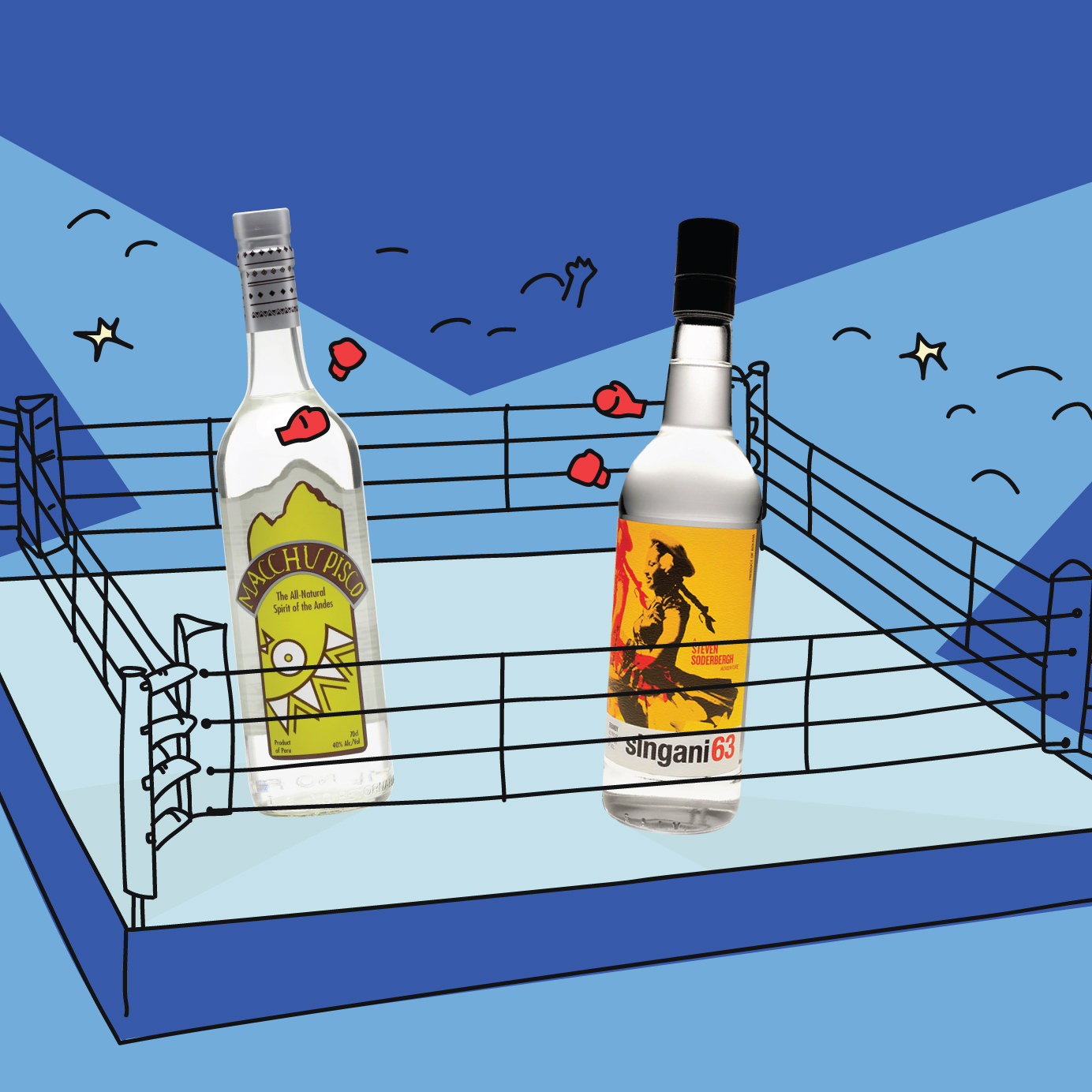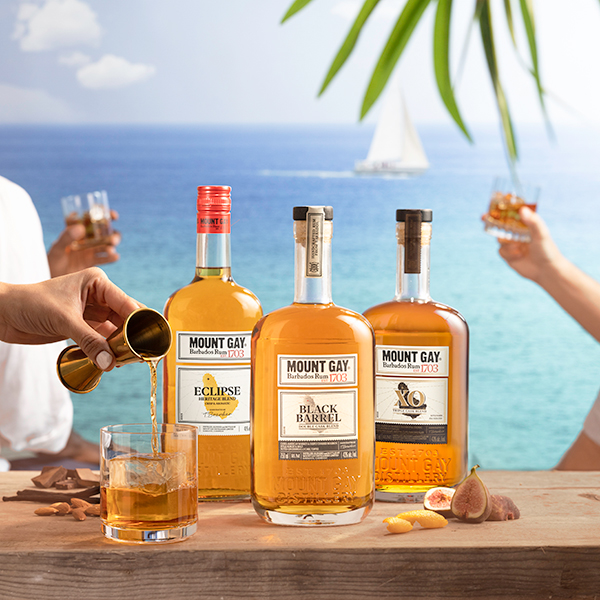
I was about five minutes into my tour of Casa Real, a family-owned distillery in Bolivia’s Tarija Valley, when I casually observed that its signature spirit, singani, sounded a lot like pisco. Both are made by distilling white wine, and both result in an alcohol suitable for sipping or mixing. Casa Real master distiller Jorge Furio shot me a withering glance, dismissively raised his hand, and playfully (sort of) forbid me from using the word pisco in his distillery. I’d hit a nerve.
For years, South America’s great booze feud has been between Chilean and Peruvian pisco distillers. The neighboring nations play tug of war for command of the international pisco market and the right to use the name. Peruvian pisco generated $8.6 million dollars overseas in 2016, according to the Association of Peruvian Exporters, and outsells Chilean pisco internationally by nearly three to one. In an embarrassing twist, Chile is the top importer of Peruvian pisco: Chile imported $3.13 million of the stuff in 2016, up 13 percent from the previous year. The U.S., meanwhile, imported $2.58 million of Peruvian pisco in 2016.
Now singani wants in on the action and it’s got a high-profile advocate. Oscar-winning director Steven Soderbergh fell in love with the Bolivian spirit while filming his 2008 epic, “Che.” He launched Singani 63 with Furio and Casa Real in 2016, marking the first time singani has been exported out of Bolivia in 500 years. Singani 63 is aggressively courting drinkers in the U.S. and Europe, looking for a place on back bars and cocktail lists worldwide.
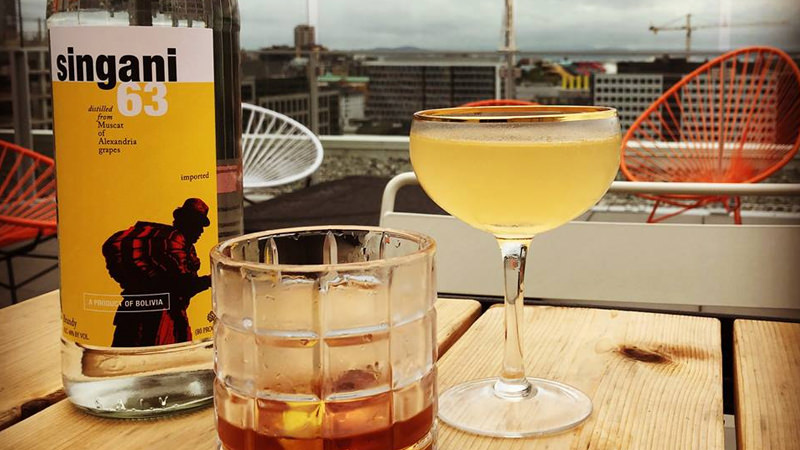
Soderbergh is unwilling to reveal Singani 63 sales figures but, seeing how there is just one brand of singani on the international market, it’s safe to say that singani-versus-pisco is currently a David and Goliath situation. But in the fickle world of spirits and cocktails, that could change — consider the remarkable recent ascents of cider or mezcal.
Peruvian pisco makers are thus keeping singani in their sights. They are focused on educating the boozing and bartending public about differences between pisco and singani, highlighting how Peruvian pisco is unique. Yes, both are made by distilling white wine, but that’s where the road splits.
“Spirits depend on their terroir and the character of each is representative of the land and climate, which is quite different in Peru than it is in Bolivia,” says Melanie Asher, creator and distiller at Macchu Pisco. This Peruvian label exports nearly every drop made. “It’s like saying a French Pinot Noir is the same as a Spanish Tempranillo. Just because they are neighbors doesn’t mean the grapes are the same.”
Asher is also quick to point out that singani is made with just one type of grape, Moscatel de Alexandria. Peruvian pisco can be made using any or all of eight different varietals. “This gives complexity and diversity,” she says. “Peruvian pisco is like a rainbow and singani is monochromatic.”
Jonathan Brathwaite, COO of Singani 63, counters: “Pisco, in many cases, is the art of blending. But the aromatic notes of singani are much more pronounced and heightened, as you are using one of the most aromatic grape varietals in the world. You are then growing and distilling at a minimum of 5,200 feet above sea level by law [in a place] where strong UV rays, warmer days, and cooler nights build up a thicker skin on the grapes and within the skin those aromatic notes are heightened.”
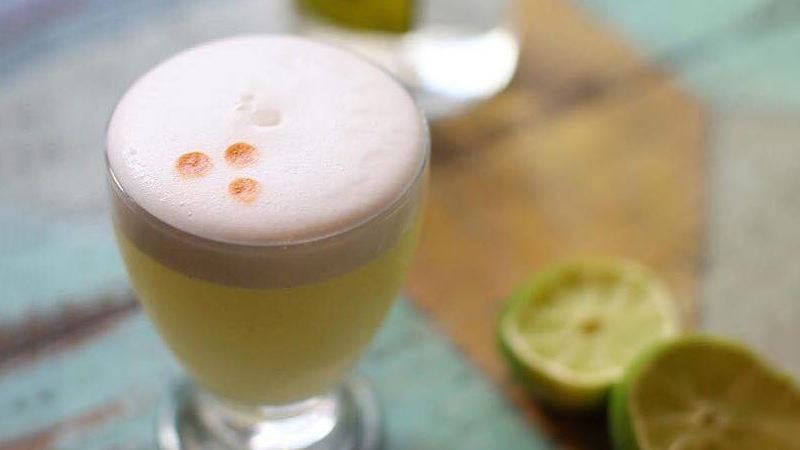
Johnny Schuler, a.k.a. Mr. Pisco, is master distiller at Pisco Porton in Ica, Peru. Pisco Porton entered the U.S. market in 2011 and now sells about 20,000 cases of Peruvian pisco in the U.S. each year. Schuler aligns singani with Chilean pisco because neither is governed by the strict rules that regulate the production of Peruvian pisco. “They distill singani twice to 70 percent alcohol and can then add water or age it in barrels,” Schuler says, whereas Peruvian pisco is distilled only once to between 38 percent and 48 percent alcohol. Peruvian pisco also has no additives and can never be aged in wood. The result, according to Schuler, is that singani has more smoothness, but doesn’t stand up to cocktails.
“My argument is what happens in the world of cocktails?” Schuler muses. “Once you make a cocktail with juice and ice you may end up with punch. I’m a drinker. I want a cocktail. You need a strong alcohol for that and singani has already been cut with water and distilled twice.”
Brantwaithe agrees that singani is “remarkably smooth,” but argues that “this means singani lends itself to greater cocktail applications because the floral aromatic notes shine through without having to cover up any sharp undertones.”
The gloves are off, clearly. But what ultimately keeps the singani-versus-pisco feud from becoming a full-on war may be a simple matter of semantics. “The Bolivians produced a distilled spirit and they gave it its own name,” says Schuler, who was born in Bolivia but moved to Peru with his parents when he was a baby. Furio, the distiller from Casa Real, told me that singani is named after a Bolivian town called Singuani which supplied food and drink (including distilled wine) to men working in the high-altitude mines around the city of Potosi. “That I can respect,” says Schuler.
“I don’t see it as a rivalry unless singani starts trying to take market share by saying it’s pisco,” Asher agrees.
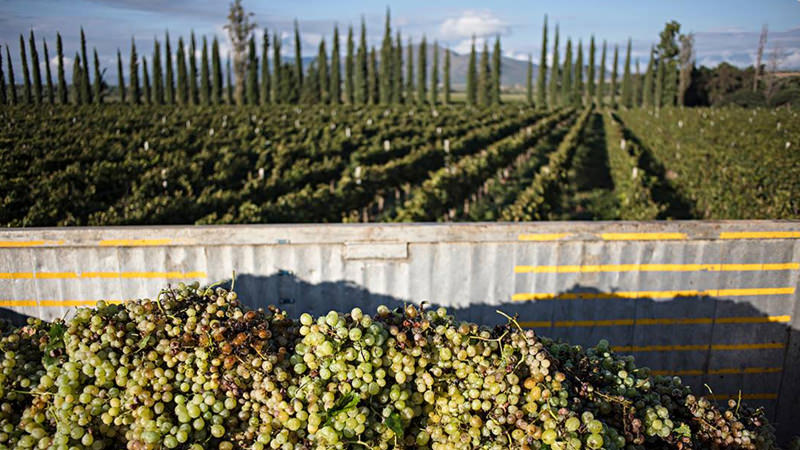
At the end of the day, more South American spirit options on the shelf are a boon for distillers and for adventurous drinkers. “The reality is that the category itself is in need of rebirth,” says Adam Weintraub, creator of Museo del Pisco bars and restaurants in Peru, each stocked with more than 100 bottles of Peruvian pisco and knowledgeable staff. “The subsets within the category — pisco and singani — stand to gain from the Chile-Bolivia-Peru rivalry because it gives consumers a chance to sample and decide for themselves.”
Growing a category abets all involved, whether it’s an American whiskey boom followed by increased thirst for rye, or passionate distillers creating awareness of heritage spirits that span countries and centuries. The drinking world is vast. Healthy competition keeps us connected.
Cover illustration by Mara Kiggins
